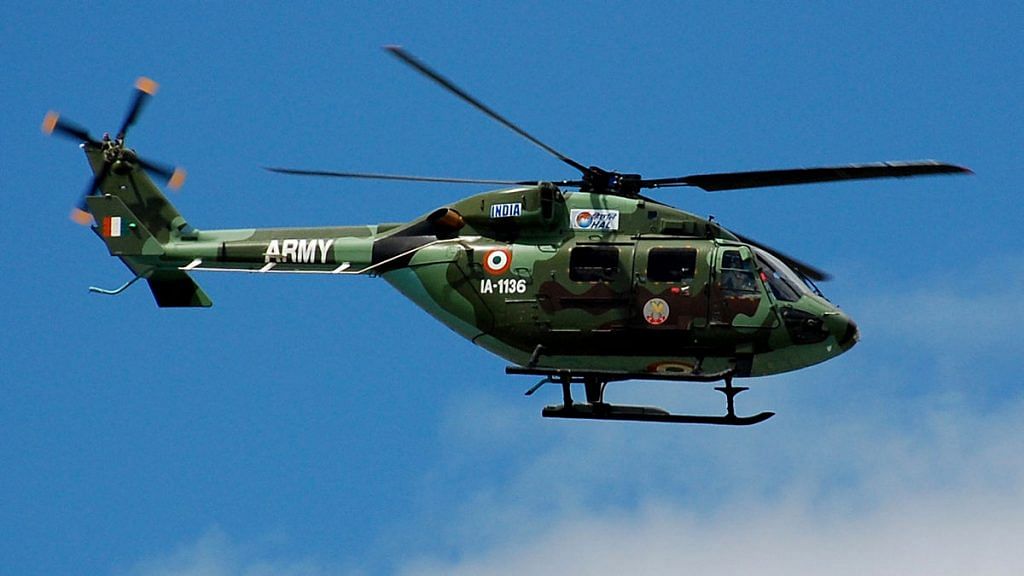New Delhi: After detailed checks of the grounded fleet, the Indian military has finally identified metallurgical and design flaw in a critical component of the indigenous Advanced Light Helicopter (ALH) — a workhorse of the armed forces — that had caused some of the recent accidents, ThePrint has learnt.
Sources in the defence and security establishment said that the helicopters are being operated again, but the parts are being changed on a priority basis and their flying life has been reduced from what it was earlier.
ThePrint was the first to report in October 2022 that the crash of an armed ALH, also known as the Rudra, in Arunachal Pradesh had occurred after the “collective”, which controls the power to the rotors and back, had broken.
It was found that this part of the helicopter was troublesome since the Court of Inquiry (CoI) into the 2019 crash of an ALH, in which the then Northern Army commander Lt. Gen. Ranbir Singh had a miraculous escape, also revealed the failure of the “collective”.
Following multiple accidents this year, a top government regulatory body, responsible for the certification of military aircraft, is undertaking a full review of the ALHs.
“Yes we have identified. We have sought replacement of the particular part and this is being replaced as we speak. The whole process will take time,” a top source in the defence establishment said, responding to a query on whether they have been able to identify the problem.
Asked whether this was a design flaw or a metallurgical issue, the source said, “It is a mix of both”.
“The good part is that the flaw has been identified and is being taken care of,” a second source added.
While the helicopters, over 300 of which have been manufactured, have logged over 3 lakh flying hours, there have been a series of accidents in the last few years. Three ALHs have crashed since March this year, forcing the military to ground the entire fleet twice for technical checks.
It was found that certain parts are showing higher fatigue than what the time frame is. The sources explained that normally a particular part has a flying life of about 400 hours, then it is serviced or replaced after 400 hours.
However, if the fatigue develops much before that, then the flying life has to be reduced so that necessary replacement or service can be done in time.
Along with the ALHs, the indigenous Light Combat Helicopter (LCH) was also grounded and underwent a full technical check by the armed services. This was because the LCH is also a variant of the ALH and, hence, shares the same parts and technology.
(Edited by Tony Rai)
Also Read: Vikramaditya back in action after 2.5 yrs, Navy to get 2 more Romeo helicopters to deploy on board
